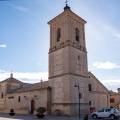Peltuinum was an ancient Italic city of the Vestini, located in modern Prata d’Ansidonia and San Pio delle Camere, in Italy’s Abruzzo region. Declared a national monument in 1902, the archaeological site lies on a plateau surrounded by majestic mountain ranges like the Gran Sasso and Maiella. Founded in the 1st century BCE during Roman administrative reforms, the city featured a temple, theater, and urban planning centered around the Claudia Nova road. Excavations have uncovered significant remains, including the city walls, a west gate, a temple possibly dedicated to Apollo, and a theater integrated into the natural terrain.
Peltuinum features significant monastic remains established after the city’s decline following the 5th-century earthquake. One notable site is the small monastery of Santa Maria Sidonia, located near the western gate (ansarium), which served as a tollhouse. This monastic complex, built using Roman walls and materials, was active from the 7th to the 17th century. Excavations revealed a church with a tiled floor, outbuildings, a courtyard with a well, and a cistern. A Roman tower was repurposed as a food warehouse. Another small monastery, likely San Nicola Sidonij, was linked to the shepherds’ veneration of St. Nicholas after returning from Puglia. Additionally, on the southern slope of the plateau, the fortified church of San Paolo, dating back to the 7th or 8th century, incorporated materials from the Roman temple and theater, maintaining a connection to the Roman city’s heritage.
- Address
Via Roma, 3, Prata d’Ansidonia, Italy - Web
https://www.peltuinum.org/en/ - Visiting Hours
Always open - What to see
Roman ruins




